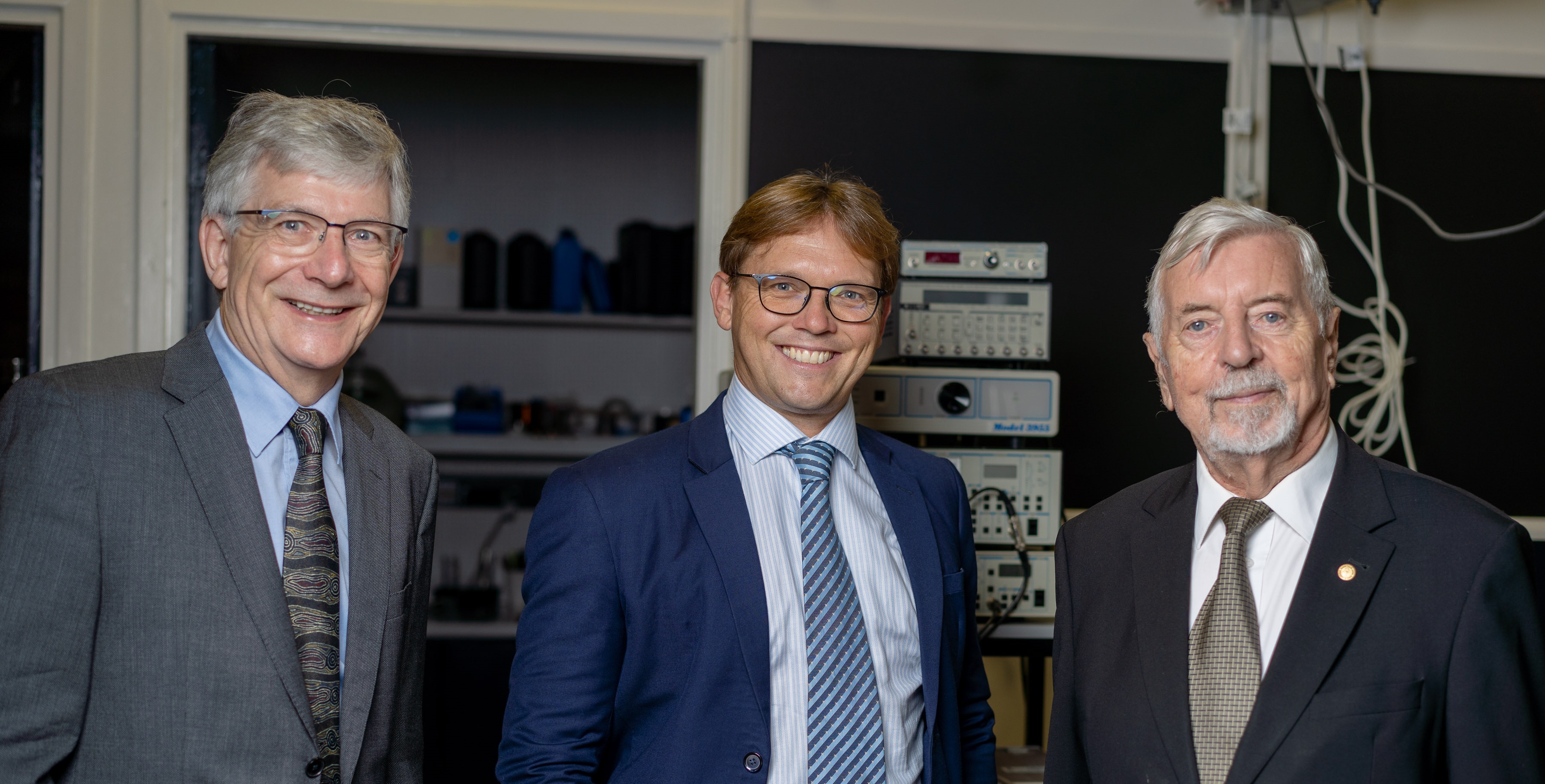Australia’s first laser fusion energy company HB11 Energy has appointed the former CEO of Australian Nuclear Science & Technology Organisation (ANSTO) Dr. Adi Paterson as a Non-Executive Director (NED).
Dr. Paterson is widely regarded as one of Australia’s leading figures in nuclear science and technology, and joins as NED following several months already spent alongside the world’s luminary laser and fusion energy experts on HB11 Energy’s scientific advisory board.
His appointment will include championing the important findings of HB11 collaborators in a key new scientific paper.
This work emphasises the importance of building petawatt laser research infrastructure in Australia to achieve sovereign capabilities in inertial nuclear fusion, and leverage science and innovation in many established and emerging fields of technology.
Dr Warren McKenzie, Founder & MD of HB11, said: “There are currently no petawatt laser facilities in the southern hemisphere. This leaves us reliant on international collaborations and overseas laser centres to progress our work generating clean, safe, and reliable energy that does not generate radioactive waste, at better prices and in greater abundance than all existing renewable energy sources combined.
“As an example, our laser hydrogen boron-11 fusion approach only requires 3.4kg of boron-11 to generate enough electricity for an entire person’s lifetime. This would replace 8,290,000 kg of coal, or 23,000,0000 tonnes of greenhouse gas emissions polluting the atmosphere today.
“This work draws upon learnings from the first ever discovery of nuclear fusion, which was achieved by an Australian physicist. We believe it is incredibly important to see an Australian-born nuclear fusion energy company advance this work on home soil.”
Dr Adi Paterson, HB11 Scientific Board Member & NED, said: “I believe that building an internationally significant multi-user petawatt class laser facility is crucial to Australia’s goal of securing a carbon-neutral future.
“Our colleagues on the HB11 white paper highlight a whole range of near-term ground-breaking applications for high-power lasers on top of this, including in the fields of biomedical engineering, quantum computing, and proton and related medical therapies.
“There is great demand for this from our local scientific, innovation and laser research communities, and with close to 50 high-power laser programs globally, we are lagging behind as a nation – but we should not have to.
“We have the resources, the brains, and the capacity to lead the world in developing truly clean, safe, and reliable clean energy and amplify technology development and science across Australia.”
Dr Miftar Ganija, Lead Scientist & Leader of the Ultra-Short Pulsed Lasers at DST Group & The University of Adelaide, said: “Using lasers to generate fusion power would be the equivalent of the moon landing.
“But on top of the vast benefits we would accrue from a fusion power generator, nuclear fusion could still generate billions of dollars in income to Australia through technology spinoffs and startups along the way.
“The team of scientists at HB11 comprises the world’s biggest and best in the field globally. Don’t be surprised if one of them receives a Nobel prize.”
REFERENCE
Download image for media release here. Caption: (L to R) Dr. Adi Patterson, Dr. Warren McKenzie, Prof. Heinrich Hora
HB11 Energy (hb11.energy) is creating the future of clean energy; safe, reliable, and unlimited electricity, generated by small nuclear fusion reactors that use abundant fuels with little or no harmful waste. It does this by using laser technology to fuse hydrogen and boron-11. Hydrogen is the most abundant element in the universe, while Boron-11 comprises some 80% of all Boron found in nature, is readily available, and is a stable, non-radioactive isotope.
Unlike other nuclear and fossil-fuel burning plants, HB11 Energy’s energy-generating process does not require large plants. Energy is released in the form of charged particles and can directly be converted to electricity without the need for steam turbines. This approach generates few neutrons through minority side reactions, which minimizes waste issues. There’s no risk of a reactor meltdown and the energy generated can be directed straight to the grid.
Notes on calculations for 3.4kg of Boron-11 to produce enough energy for one person’s lifetime:
- The average electricity an American uses in their lifetime is around 1000 MWh – source.
- According to HB11’s roadmap paper, 14mg boron-11 can produce 0.3MWh of electricity (this includes assumptions on perfect electricity conversion)
- This equates to 47g /year, or 3.4kgs in the lifetime of a person with a life expectancy of 72.6 years
- The cost of boron ranges from < $US1/kg for the ores, to about $US85/kg for pure boron – source.
Dr. Adi Paterson bio:
Dr. Adi Paterson is the former CEO of ANSTO, during which time he had strategic oversight and responsibility for ANSTO’s multi-facetted portfolio of activities.
ANSTO operates the multi-purpose Open Pool Australian Light-water (OPAL) Reactor which provides access to neutrons for science and irradiation services for Australian and overseas users. Dr. Paterson oversaw the integration of the Australian Synchrotron into ANSTO operations in 2016. This is currently undertaking a major capital program for eight new beamlines to amplify and diversify opportunities for the extensive user communities in Australia, New Zealand, and overseas.
Dr. Paterson’s focus on the importance of diversity and inclusion, particularly in STEM, continues with his recent appointment as Co-Chair of ATSE’s Elevate Program following his service from 2016 as a Male Champion of Change for STEM.
Dr. Paterson has experience in key policy areas including science and innovation, energy and the nuclear fuel cycle. He is a Fellow of the Australian Academy of Technology and Engineering (ATSE) and the Royal Society of New South Wales, and an Honorary Fellow of Engineers Australia (EA). The Sydney Division of Engineers Australia recognised him as the 2012 Professional Engineer of the Year.
Prior to joining ANSTO, Dr. Paterson was General Manager, Business Development and Operations at the Pebble Bed Modular Reactor Company in South Africa.
Dr. Paterson holds a BSc (Chemistry) and a PhD (Engineering), both from the University of Cape Town. He was awarded an Honorary Doctorate by the University of Wollongong in 2017.

